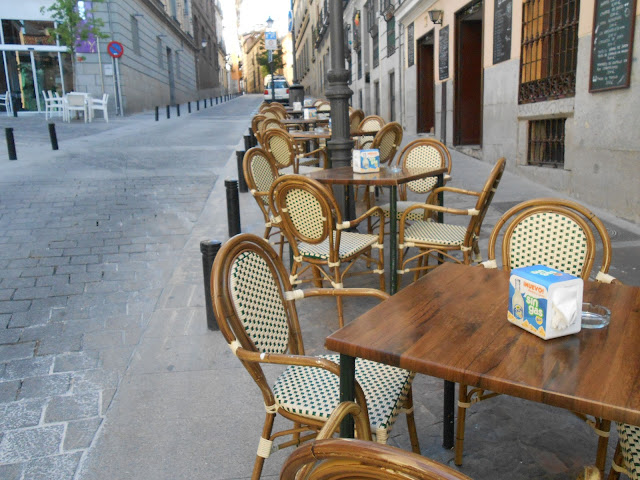El Palacio Real de la Granja de San Ildefonso
 |
This photo barely even captures the beauty of this palace--I cannot believe things like these exist! This 18th century palace is located in hills near Segovia in the small town of San Ildefonso. Many kings of Spain have lived here since the reign of Philip IV. The palace has a baroque-style including vast gardens, statues, and fountains. Interesting tidbit: because of its vastness, many kings picked this palace as their hunting spot.
Sadly, we were not able to take photos inside, however, the gardens were by far my favorite part of the palace. They were designed by a French designer of the French royal offices, Robert de Cotte and René Carlier. The main garden is arranged on a large slope, which makes is very easy to see a great deal of the garden at once.
 |
| A side view of the garden with a Sphinx statue in the lower right hand corner |
El Palacio Real de Madrid is the largest palace in Europe (by floor area). It covers 135,000 sq. meters (1,450,000 sq. feet) and contains 3,418 rooms. It is considered the official residence of the Spanish Royal family, however, they reside on the outskirts of Madrid in more "modest" Palacio de Zuarzela. This palace was by far the most impressive from what I have seen so far. Thinking about it, I probably could not make even half of the decor that is inside the palace in one lifetime.
The original 16th century palace burned down in 1764 and was rebuilt with more durable materials, which you can clearly see with all of the granite and stone inside. The design is baroque and classicist having incredible architecture and embellishments. Again, we were not allowed to take photos inside the palace, so another reason to visit. I would say it is a must-see for your bucket list. Here are a few photos I grabbed off google images so you can get a glimpse of what I'm talking about.
 |
| The "Porcelain Room"--yes the walls and ceiling of the room are made of porcelain. Other rooms include silk, gold and many other precious materials. The carpets are also extremely impressive. |
 |
| Gold details all throughout the palace--even stitched into material that is upholstered on the walls and curtains |
 |
| Just one of the many ceilings |













































